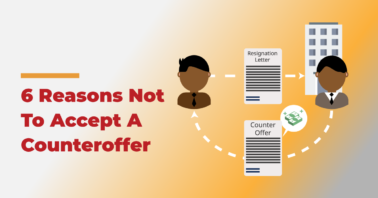B2B cold calling is a tactic used to generate business leads. It is a form of telemarketing
that involves calling a potential customer who has had no interaction with the telemarketer before.
While the unsolicited nature of the calls may seem unorthodox when used wisely, cold calls can assure you of a steady flow of new customers to your business or enterprise.

B2B cold calling is particularly essential and valuable for start-ups and businesses that
may not have much of a marketing budget. That is because, compared to the more elaborate ad campaigns, cold calls will only cost your enterprise a negligible sum of money, but have the potential of bringing in a starter client base.
If cold calls are directed towards other (more established) businesses, it is the easiest way to get your foot in without incurring much expense.
To be successful, however, your calls need to have some critical components. Below are tips on how you can make your B2B cold calling efforts a sure hit:
Table of Contents
1. Research
Always know the most you can about the products you are about to pitch. Closely related to this, ensure you have a working knowledge of the target company’s needs as well.
Nothing kills a potentially productive cold call faster than a telemarketer’s bumbling responses when faced with questions about his product. Knowing the product involves knowing the good, the bad, and the ugly. That is not because you will necessarily need to mention all these to the potential clients, but because you will be able to navigate any questions they have.

For example, when pitching a product with a past of recalls, you should be aware of this fact and have a way to navigate the issue. Why should the client bank on the product? What has changed?
Understanding your prospective client’s business needs will also come in handy in demonstrating how your product will be helpful to them. Accurate and relevant data is an invaluable asset.
2. Refresh your Contact Database
Keep a close tab on your contact list and ensure you target and pursue promising leads. That would require you to be well versed with your industry’s dynamics and know its current trends.
B2B cold calling requires a fresh contact list which gives you a greater chance of getting profitable deals. One way to ensure this is by deleting obsolete leads and contacts and replacing them with fresh ones.

Hanging on to obsolete contacts exposes you to the likelihood of pursuing people who might have changed jobs, businesses, or positions, possibly rendering your pursuit worthless. In the same spirit, remove the disinterested from your contacts as you might wind up wasting time on dead ends.
Granted, shrinking your contacts is a scary notion for most telemarketers. But it is also important to stay realistic as to which prospects are unlikely to bear fruit no matter how often you pitch to them.
A good indicator of fruitless contacts is those that consistently fail to take calls or attend scheduled meetings. Instead, target businesses with a similar outlook and profile as those with which you have already closed the deal.
3. Attitude and Body Language
Have you ever called someone, and at ‘Hello,’ you could instantly tell that they were lying down, smiling, distracted, or even grumpy?
Believe it or not, your body language and attitude have a way of seeping into your phone call. Your business prospect can feel your attitude and disposition even though it is just a phone call.

No one wants to be the recipient of a cold call from a distracted or unenthusiastic telemarketer. Therefore, it is advisable to watch your body language when making your calls. Remember, a pumped-up and positive attitude is contagious.
So, why not use it to your favour in convincing the business prospect that yours is an idea or product worth exploring? Adopt a confident attitude and posture, and the recipient’s mindset will also tend to be more favourable towards you.
One of the handy poses that successful telemarketers employ is speaking while standing up (as this subconsciously boosts one’s confidence) and speaking with a smile.
4. Embrace Outcomes
Learning to accept rejection while keeping a positive attitude may take a lot of effort. That is more so when the prospect was a big-budget corporate or a dominant entity in the industry.
Nonetheless, when the most promising clients rebuff your cold calls, you have to find a way to cope and push on with your job. The first thing you need to remember is that despite the rude shock, it is never personal.
Tempting as it is for you to think otherwise, there is a good likelihood that nothing is wrong with you or your product. Sometimes the prospect may be dealing with an issue on their end that is leaving them less open to new products or services.

The key lies in being ready and willing to find out why the prospect felt that way. So, ask the contact person what might have led to their answer.
Regardless, they might point to a flaw on your end that was the deal-breaker. In such a case, you will need to listen objectively to your contact to make informed decisions from that point forward.
Who knows, that information may prove immensely helpful should you decide to approach them again in future.
5. Preserve the Data No Matter the Outcome
This tip is closely tied to the information above.
Regardless of the outcome of your B2B cold calling efforts, ensure that you preserve the data you have gathered along the way. Besides generating corporate clients, B2B cold calls can expose you to future business prospects with your target companies or businesses.

Retention of the contact data and information will make it easy to approach that client once again should a business opportunity arise in the future.





